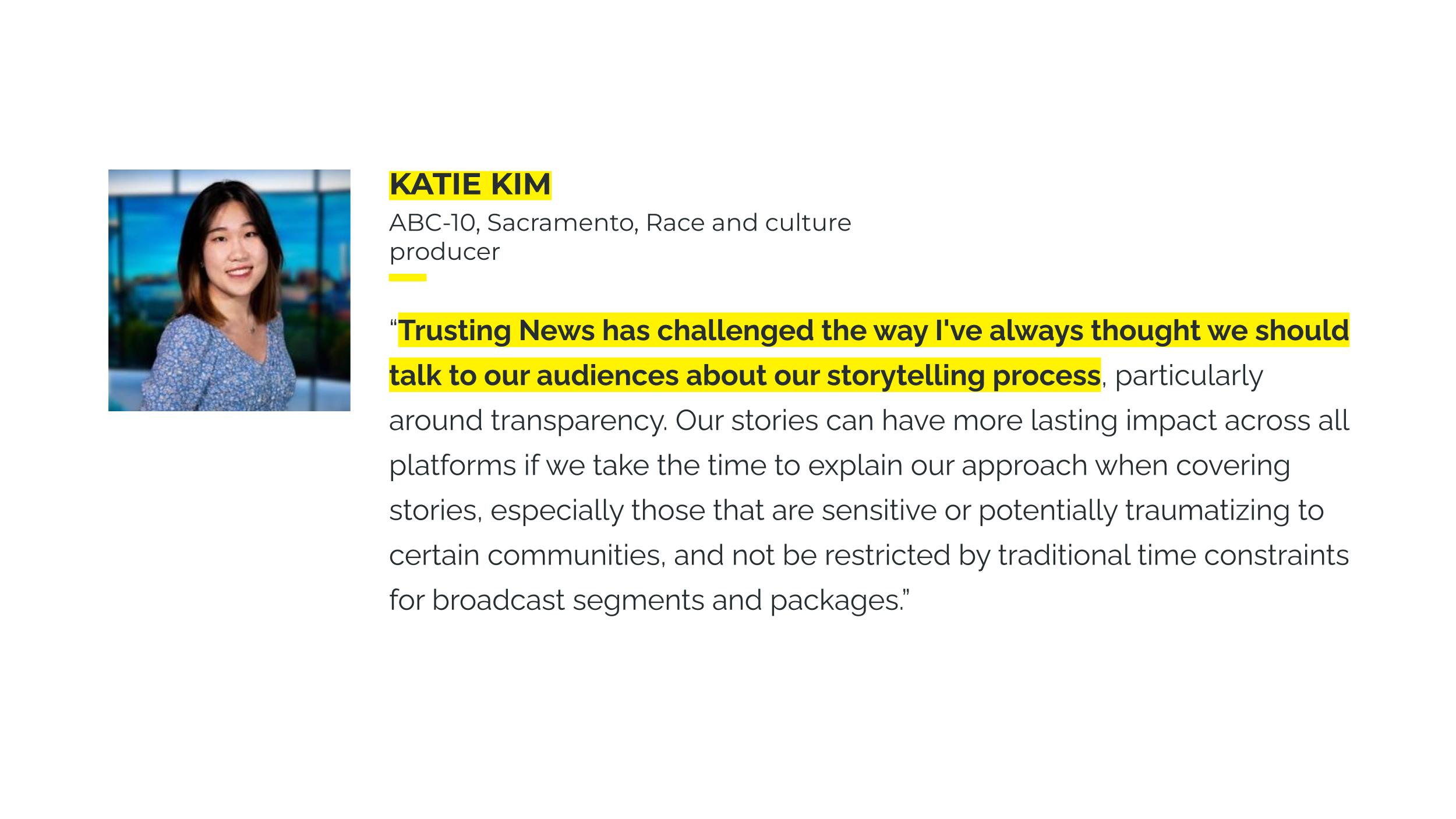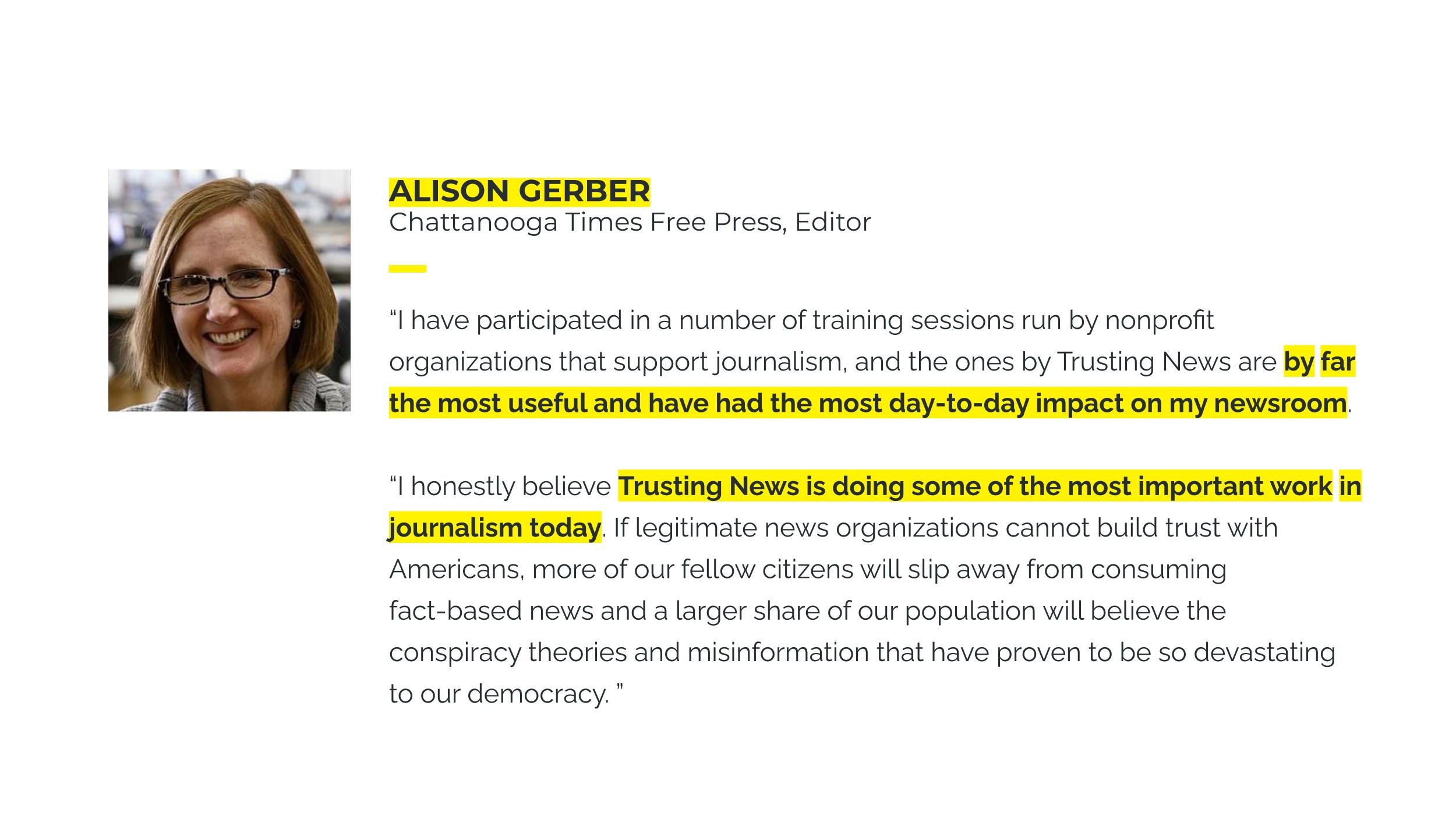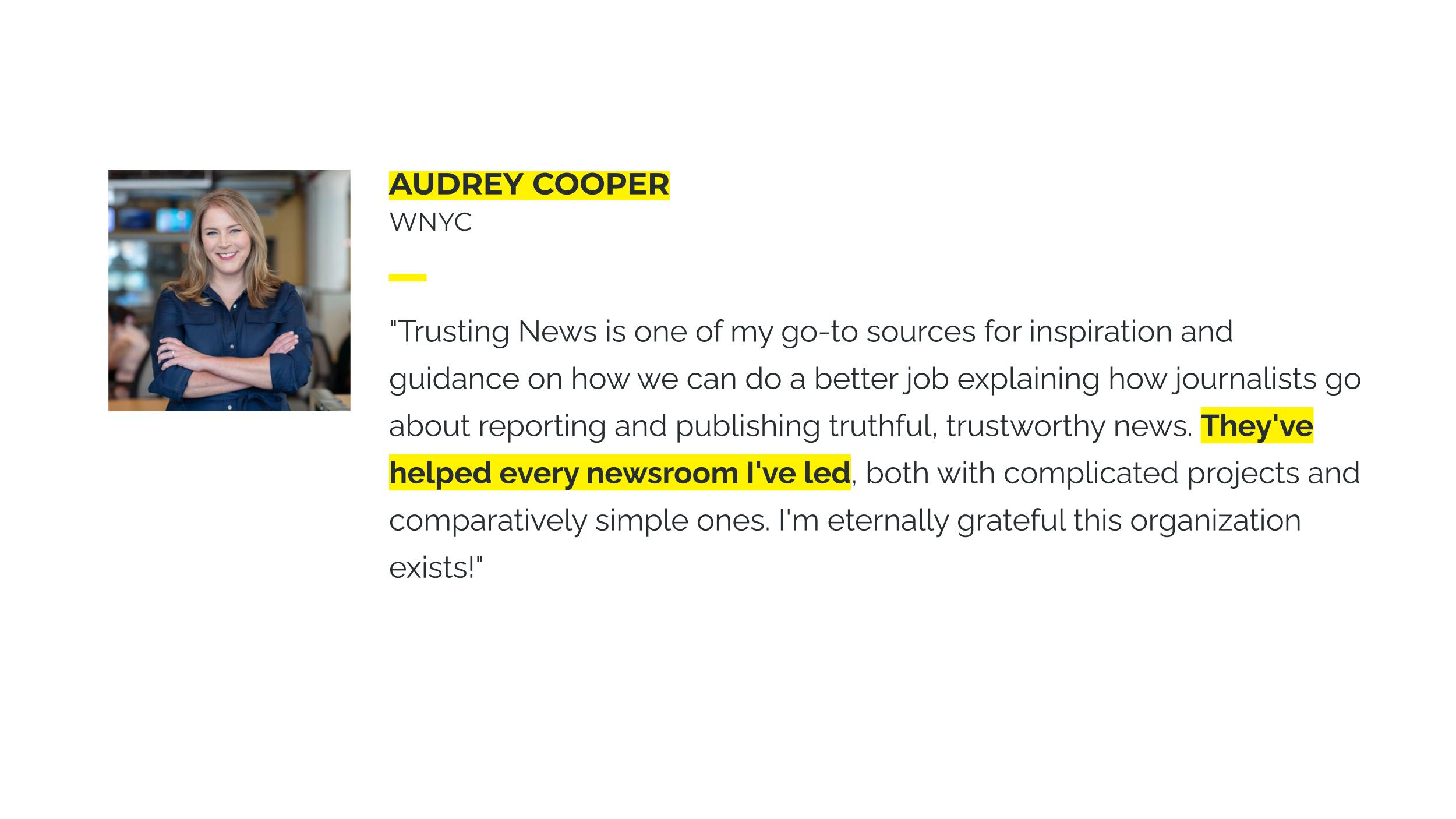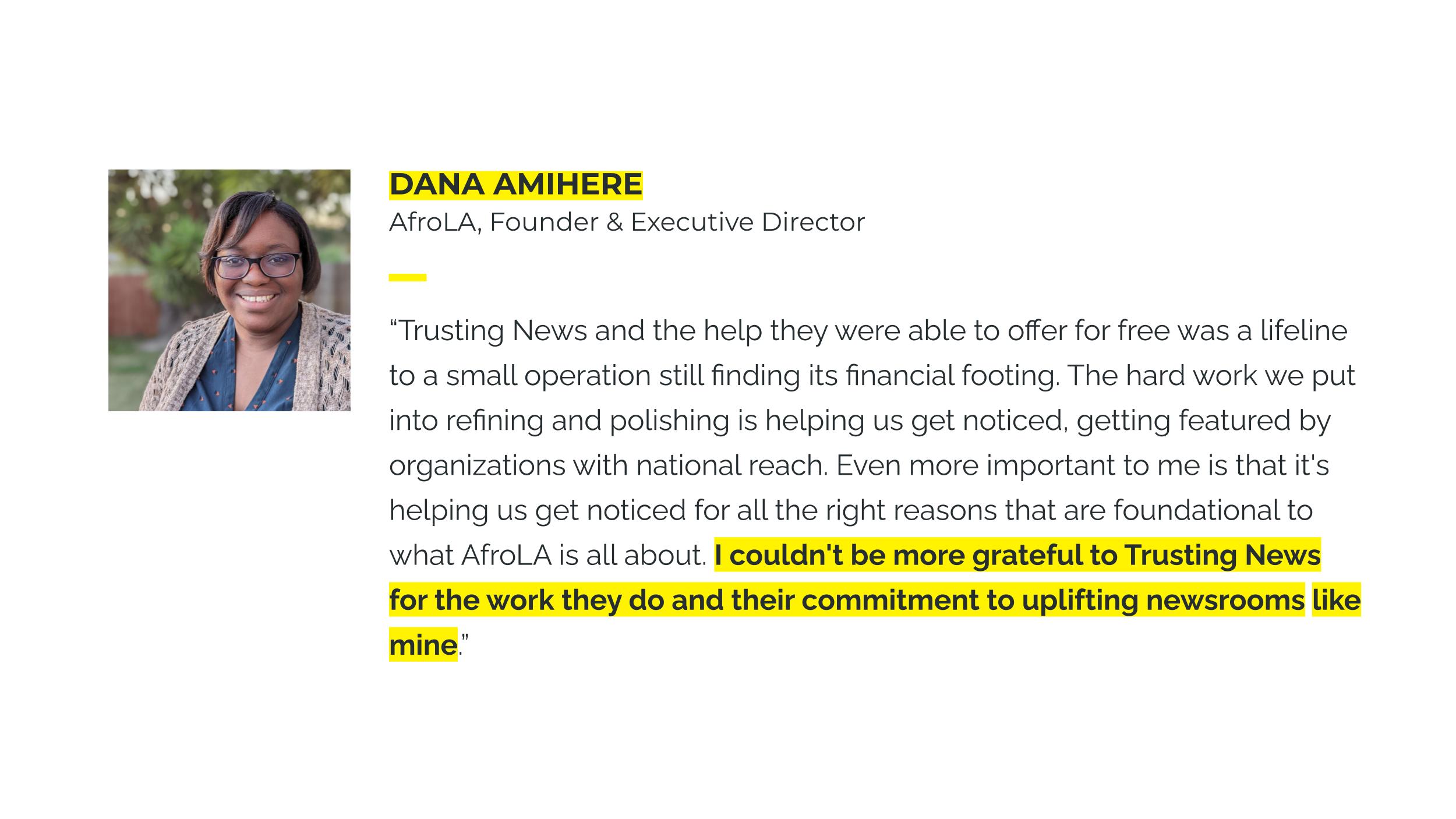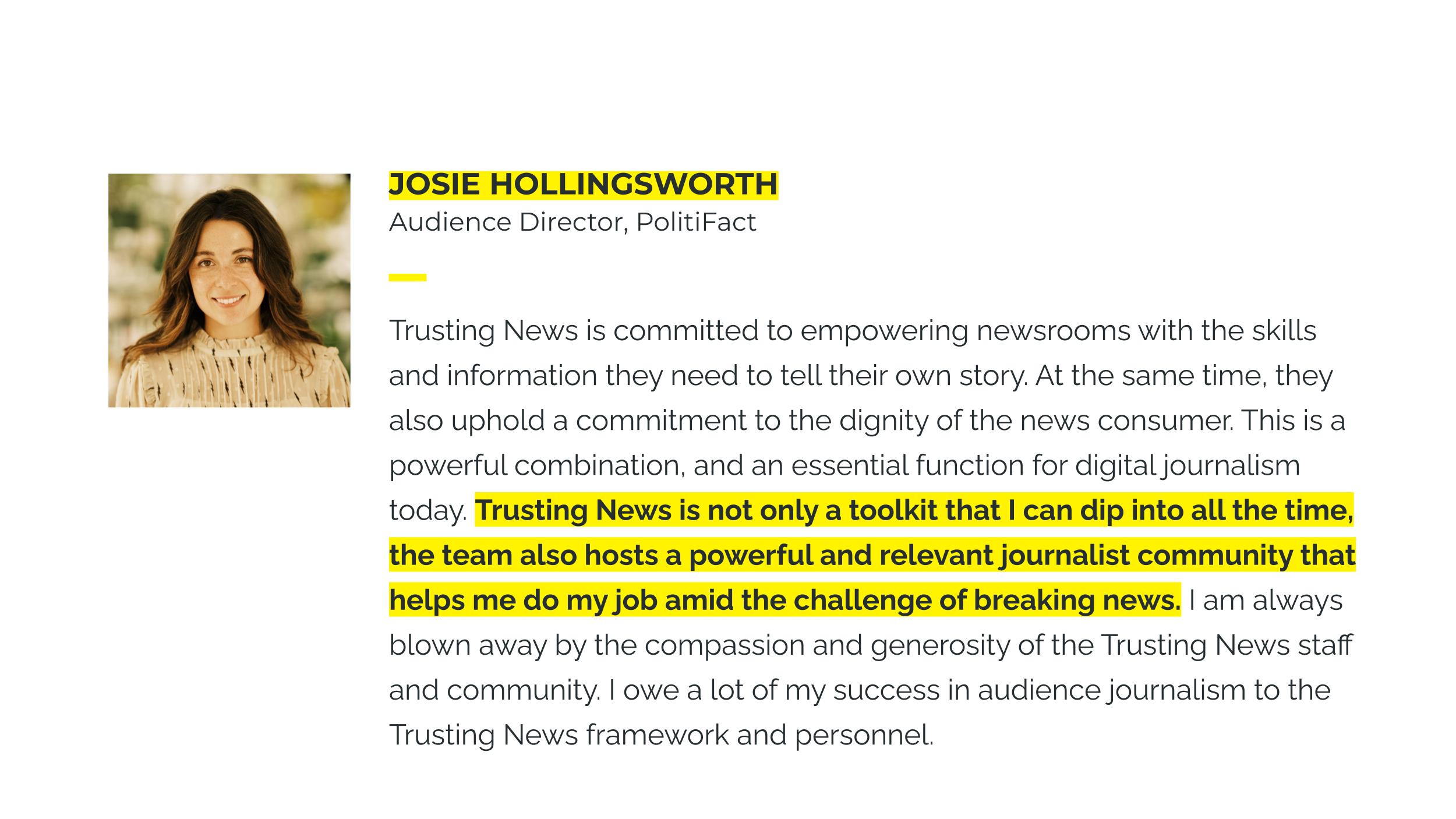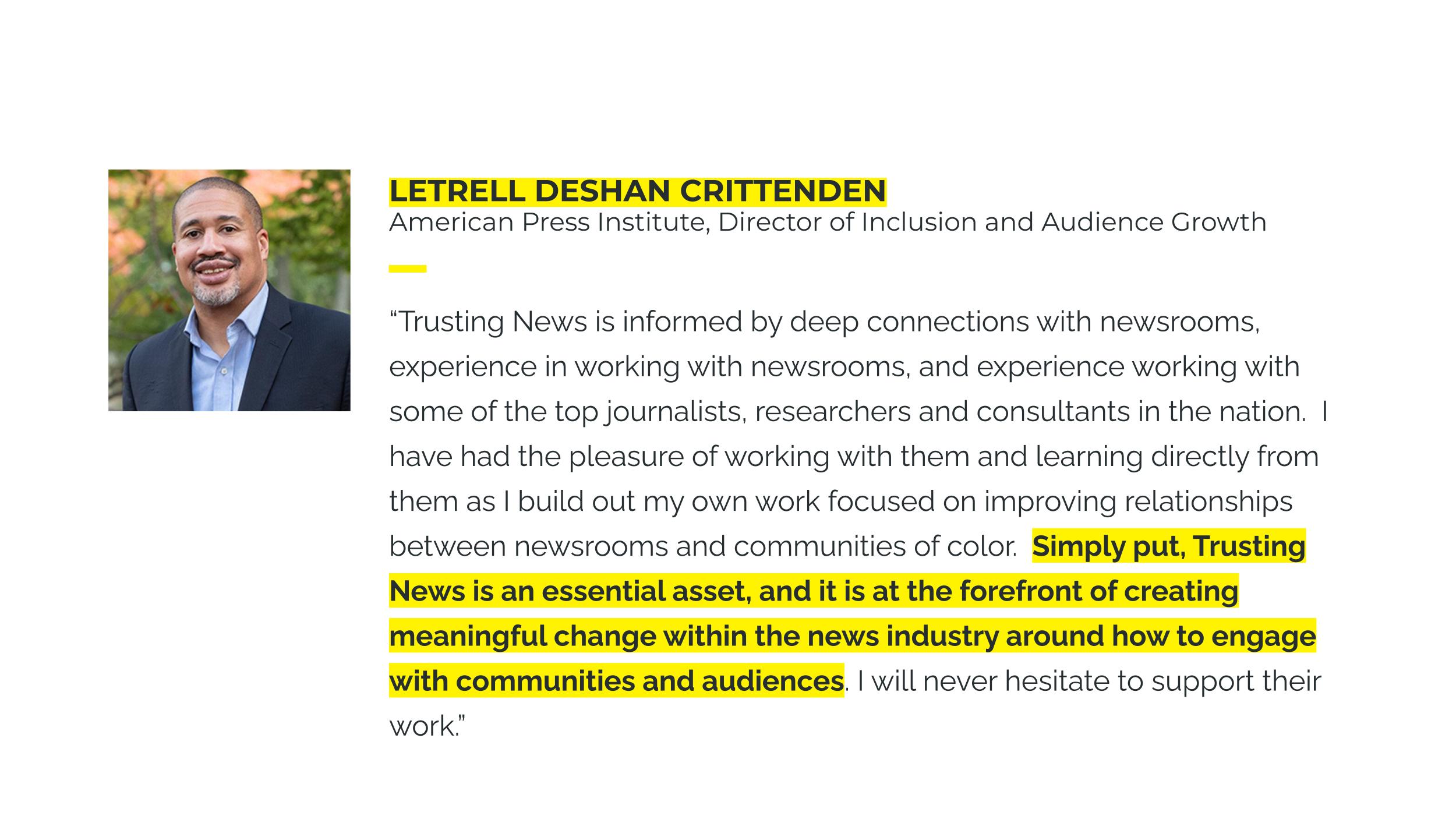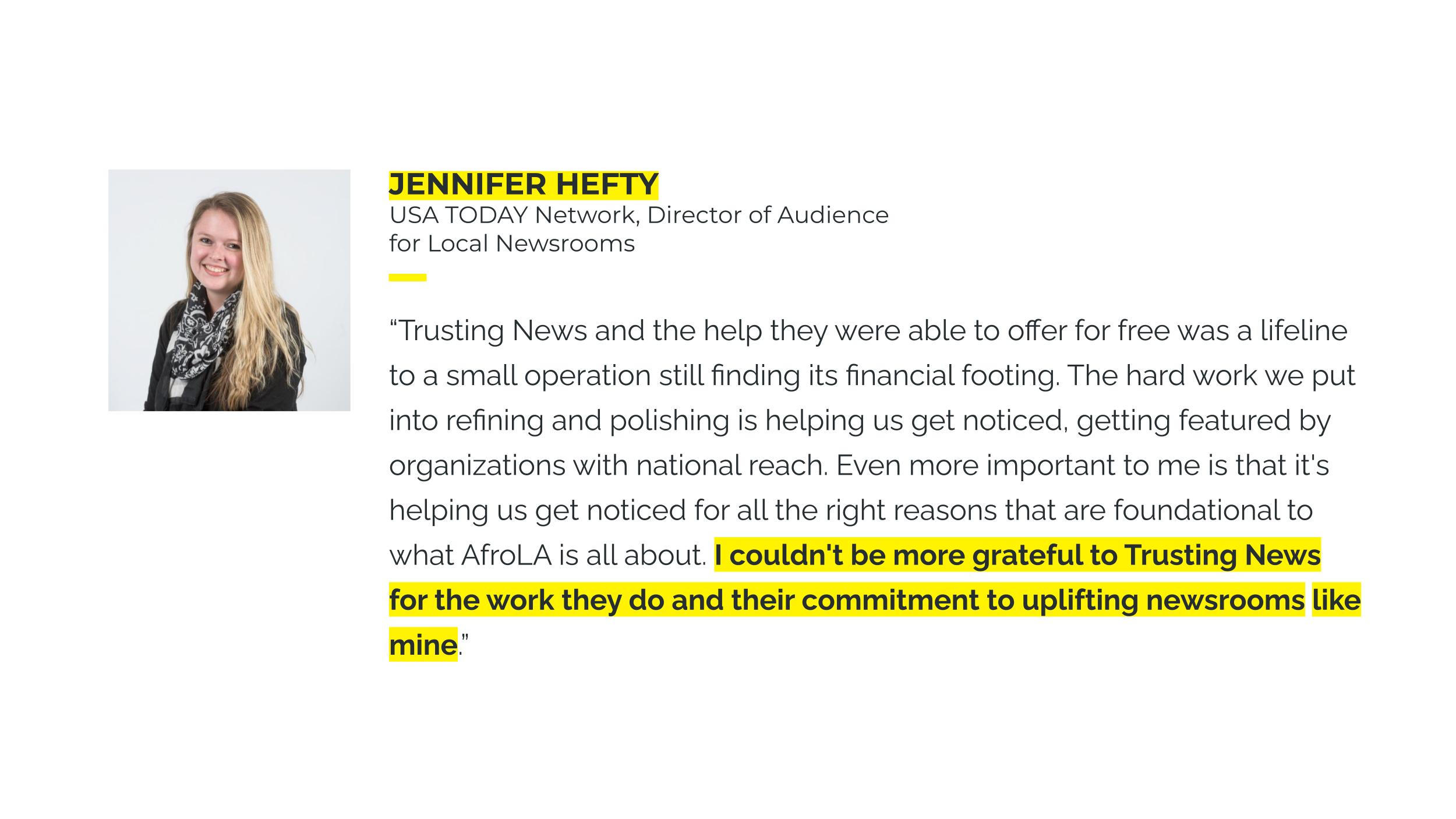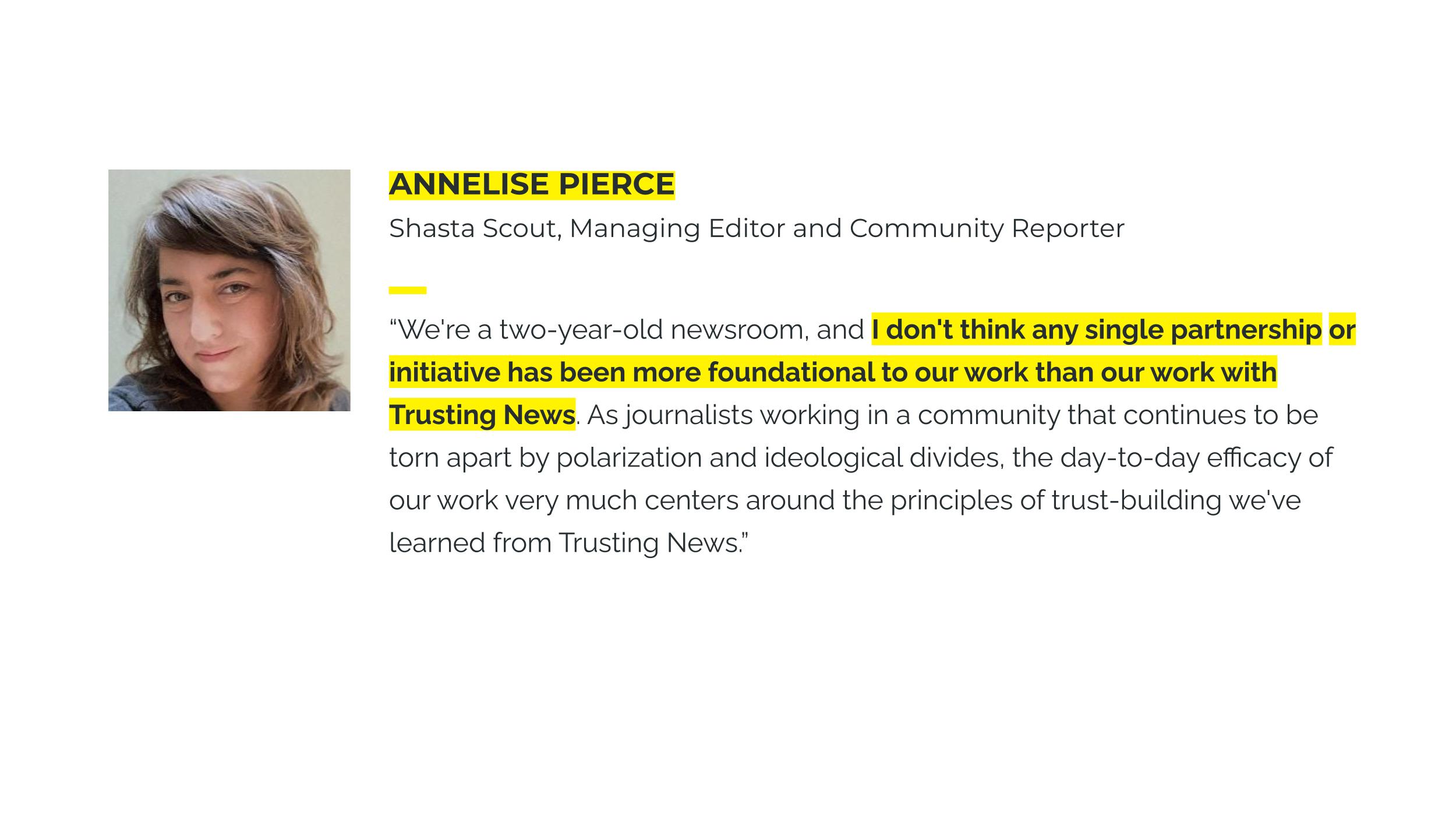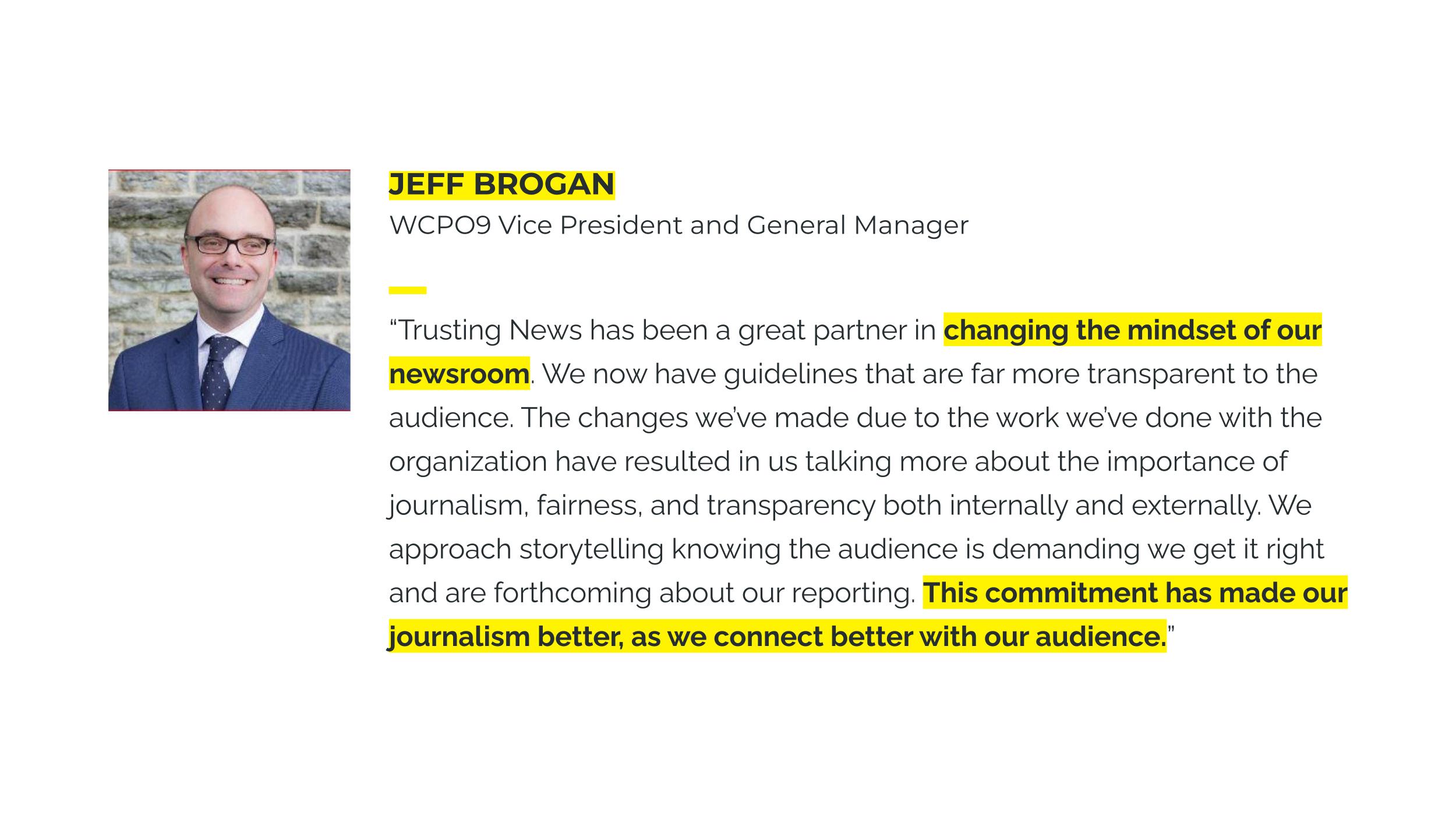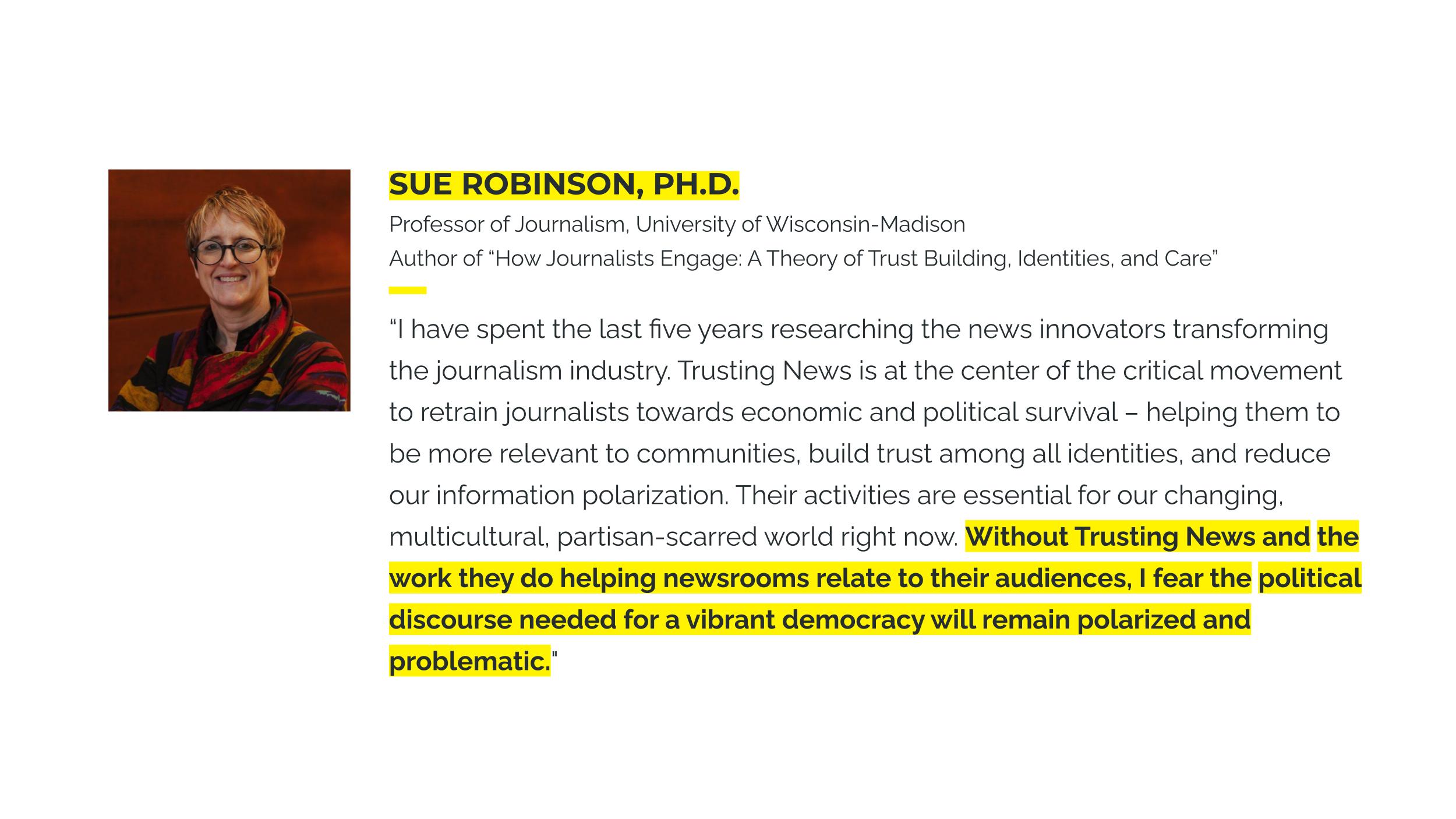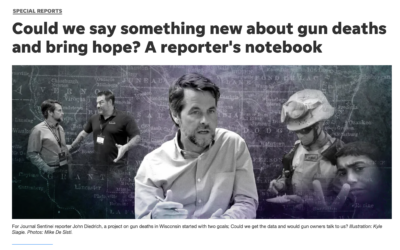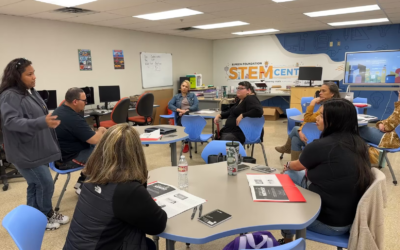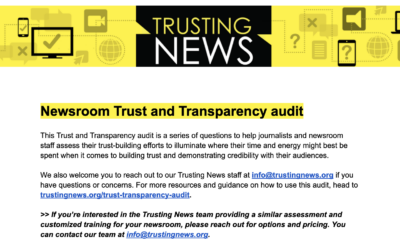Testimonials | Research | Case studies
Trusting News is leading a movement that empowers journalists to change their practices in order to earn trust, not just expect it.
In order to live up to their public service mission, journalists need to listen and engage with humility and empathy, and they need to tell the story of the integrity behind their work and what role journalism plays in communities. We support them in this transformational change.
We measure impact through:

Change in journalists
Journalists change their routines to include more transparency, more engagement and an increased respect for what communities need while gathering, producing and sharing information.

Change in content
News coverage has trust-building strategies baked in, so audiences learn more about how news works and journalism ethics as they consume day-to-day stories.

Change in relationships
Journalists better understand the people they aim to serve, resulting in more people in their diverse, complex communities seeing their values and experiences reflected in news coverage.

Change in communities
Increased engagement and listening, along with internal reflection by newsrooms leads to journalists helping communities understand, discuss, debate and solve community issues.
Who we’ve worked with
We’ve trained thousands of journalists to better earn trust in their communities. Here is a look at all the communities where journalists have received support from our team.
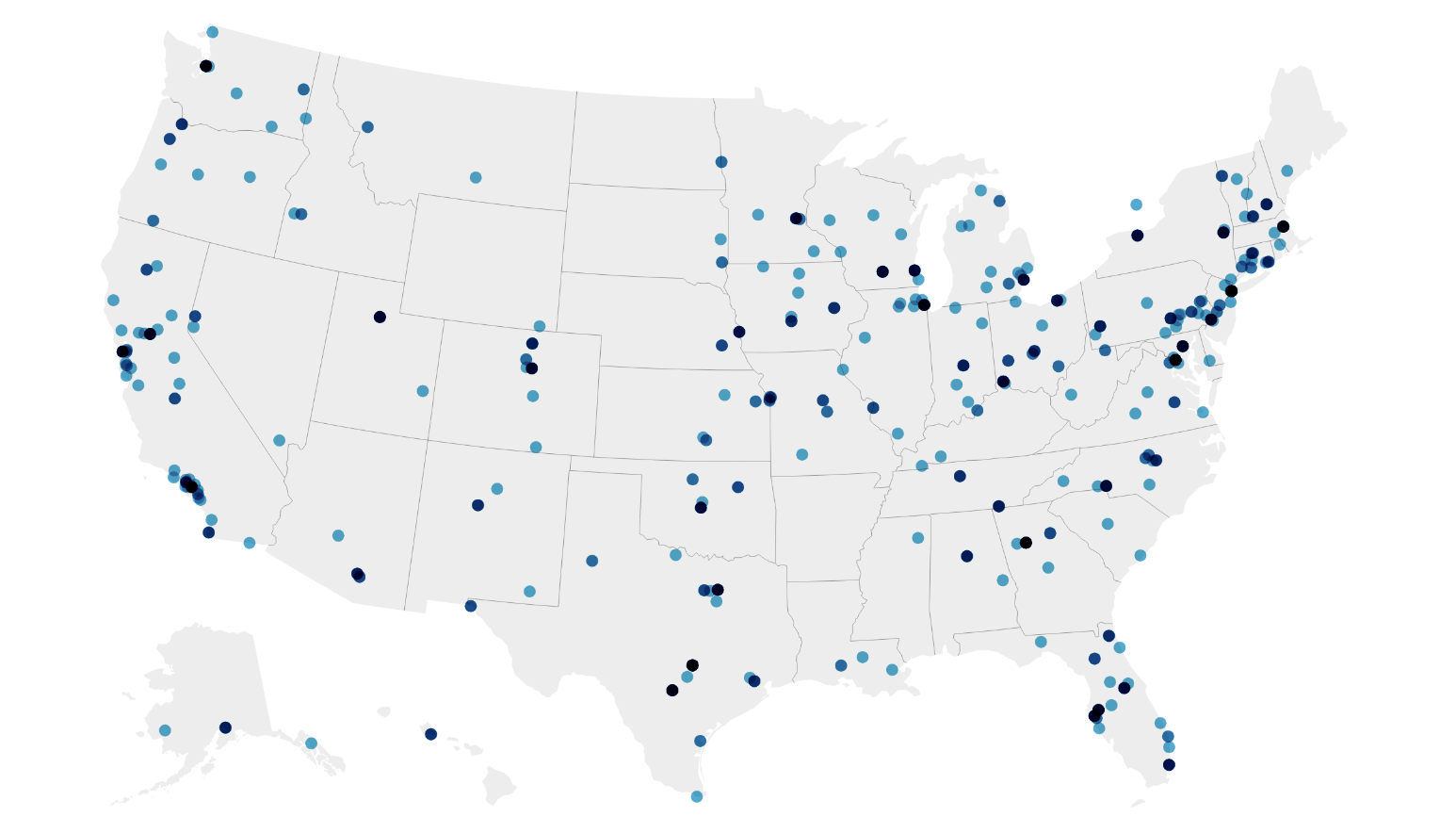
We’ve coached and trained journalists in hundreds of newsrooms. We work with journalists in all mediums (TV, online, radio, etc.), in all regions (including international newsrooms) and all ownership models (non-profit, for profit, etc.) Below is a look at some of the newsrooms we have coached.

Our work transforms how newsrooms operate.
Read testimonials from newsroom partners of how our work has impacted their newsrooms and journalism.
Our strategies are backed by research
It is important the industry’s collective understanding of trust continually evolves. We look for opportunities to work with academic researchers to better understand the perceptions, preferences, attitudes and behavior of news consumers.
Here’s some of the research we’ve invested in and what we’ve learned.
- With the Center for Media Engagement at the University of Texas, we tested whether adding explanations for how journalists do their jobs is a useful tool to help build trust. Our experiment found that adding an “explain your process” box can indeed improve a user’s perceptions of a news organization.
- With the University of Georgia, we found it’s most effective when journalists weave transparency elements, like these “explain your process boxes”, into a story itself rather than pulling it out in separate elements.
- Also with the Center for Media Engagement, a study using focus groups showed TV viewers’ perceptions of news organizations improve when journalists explain why a story is being done.
- With research partner Dr. Joshua Darr at Syracuse University, we analyzed how newsrooms could reach and attract more readers from across the political spectrum if they avoided polarizing writing and editing choices. For two months, five newsrooms used an Anti-Polarization Checklist and found some common pitfalls to avoid.
- A recipient of the prestigious Carnegie Fellowship, Darr’s work for this fellowship is focused on trust and polarization. He’s been testing perceptions of fairness and polarization in news headlines and story framing. The results so far point to most people preferring neutral headlines, even when it comes to covering disinformation in politics.
Head here to read more about our research and newsroom work around polarization.
- We routinely send journalists out to interview people with low trust in news and turn the data into actionable insights. In 2019, we sent journalists out to do 81 in-depth interviews with people in their communities to better learn where there was mistrust.
- In partnership with the Center for Media Engagement, we set out to better understand distrust with politically right-leaning, conservative audiences. A group of 27 local newsrooms across the country used our interview guide to survey hundreds of self-identified right-leaning community members. The discussions revealed specific approaches journalists can take to better connect with their conservative and right-leaning audiences. View the full report and findings here.
- We partnered with researchers Dr. Sue Robinson from the University of Wisconsin-Madison and Patrick Johnson at Marquette University to learn about the needs and perceptions of people with low trust in news in their communities. The study showed after talking to a journalist, community members had higher trust and were more likely to consider paying for the news.
If you are a researcher interested in trust and perceptions of news, we’d love to talk about potential collaborations. Please email info@TrustingNews.org.
Newsroom case studies
How a local reporter made gun coverage hearable across the political spectrum
Note from Trusting News: John Diedrich is an investigative reporter at the Milwaukee Journal...
How an ecosystem approach to change in local news is benefitting news consumers in Oklahoma
Today’s local news landscape is complicated and messy, and a lot of words are being written about...
How trustworthy is your newsroom? Use this audit to find out
Most mission-driven journalists care a lot about being seen as a trusted, credible source of...

